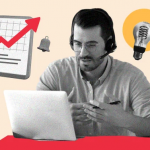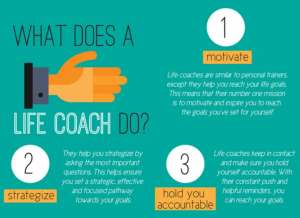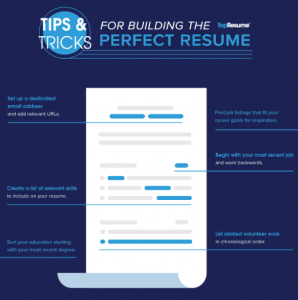Executive coaching used to get a bad rap, and, in some places, it still does. Why? Many companies use executive coaching as a last resort to try and fix difficult performance issues.
Unsurprisingly, this often ends with the coached executives leaving the company. So, in some workplaces, getting an executive coach assigned to you is perceived as “the kiss of death”.
But, when done right, executive coaching is very similar to coaching in professional sports. Just as sports teams hire coaches to help their athletes achieve the best possible results, companies hire executive coaches to take their executive teams’ performance to the next level.
Good companies see executive coaching as an investment in their leaders and leaders-to-be. A qualified executive coach is a valuable partner in leadership and career development. Ideal executive coaching clients are:
- Valuable contributors whom the company is willing to invest in.
- Executive employees facing new roles, new challenges, or leading through unprecedented organisational change.
- Experienced leaders seeking a different way of behaving and thinking in order to take their leadership to the next level.
- Open-minded business owners or CEOs willing to try new things that may take them out of their comfort zone.
Here’s what it takes to build an effective executive coaching process:
Discovery
The coach and the client need to be on the same page for this to work. So, a “discovery” session of some sort is essential to developing a solid coaching plan for an individual. The coach and their potential client may have a discussion in which they will clarify:
- What executive coaching is and what it isn’t
- What the client is looking for in the coaching relationship
- The coach’s style and how it resonates with the coachee
- How relative are the coach’s credentials to the client’s needs
- Rules of engagement and protocol (the coach, the executive, and HR need to agree upon clear ground rules regarding confidentiality)
- How success will be measured
- Timing and logistics of the executive coaching process
Assessment
The assessment phase is an essential step of any executive coaching process. Generally, it consists of three parts:
- In-depth assessment interview
- Developmental feedback interviews with important stakeholders
- Identifying and comparing the executive’s leadership profile using leadership personality assessments tools
To create a customised development process for their client, the coach needs to help their client identify their leadership strengths and weaknesses more objectively. An in-depth assessment interview by a trained professional will help uncover hidden roadblocks and help clarify strengths to build upon.
No matter how much we want to grow, we may be oblivious to barriers that prevent us from growing. At the same time, these barriers are often all too well seen by others. This is why developmental feedback from crucial stakeholders is key to detecting and understanding roadblocks to our success.
Using highly effective development tools such as 360-degree feedback, executive coaches collect and analyse input from peers and other trusted stakeholders.
When soliciting information, it’s imperative for the executive coach to protect the confidentiality of the raters. People rarely give honest answers without a guarantee of anonymity.
The feedback helps the coach zero in on key areas for development by unearthing any disconnects between the perception of the executive by others and the self-perception of the executive.
Executive coaches also use well-validated assessment tools, such as Myers Briggs, Firo-B, 16PF, and ASSESS, to identify and evaluate their client’s leadership profile.
One of the purposes of these tools is to help the coachee understand their strengths and weaknesses more objectively so that they can develop the weaker points and capitalise on their strengths.
Debriefing
The debriefing is a two-way process where the executive coach interacts with the coachee regarding the results of the assessments process. But, the debriefing stage is a continuation of the assessment page.
Usually, the reactions of the coachee (embellishments, denials, defensiveness, etc.) help the coach further assess the situation and decide how to proceed with the next stage of the process—behaviour change and action planning.
Action Planning
The executive coach starts to put the gathered knowledge into action. The executive coach and the coachee need to come to an agreement on which developmental needs are most important and truly achievable in order for the coach to develop an action plan.
Ideally, the coach will address the personal developmental issues of the coachee while simultaneously lending them support in addressing and focusing on strategic issues of their company.
The coach may introduce new concepts, skills, and on-the-job exercises to the coachee on a weekly basis.
When developing an action plan, the coach will look for real-life situations where their coachee can practice the skills and behaviours they have learned through the coaching process.
However, the coach also needs to hold the client accountable for their actions (or lack thereof). So, the coach and the coachee will set a time frame for the completion of specific tasks that are a part of the action plan. The coachee can use the action plan itself to see how far they have progressed.
Acting
During this phase, the coachee implements and practices their newly learned skills while the coach keeps track of the results. Both the coach and the coachee need to pay attention to successes, resistances, failures, and any other factors that may derail the development process.
During this stage, the coachee reports back to the coach and the coach reviews their progress. Periodically, the coach may need to reassess and refine the process.
Evaluation
The entire coaching process can range from 6 to 12 months. After the last coaching session, the coach starts the evaluation process.
It is the job of the executive coach to collect data on how the coaching sessions have affected the executive employee’s leadership style and their overall contribution to their workplace.
In this phase, the coach and the coachee analyse the coachee’s achievements. If the arrangement is a three-way partnership, the company for which the executive works for may also be involved in this process.
How Executive Coaching Does Not Work
It is very important to differentiate between an executive coach, a executive coaching consultant, and a mentor.
The table below should make it much easier:
| Process: | Consultant | Mentoring | Executive coach |
| Thought: | I am an expert. You are paying me to tell you this. | I know how… My experience is… | Where would you like to go from here? How can I support your learning? |
| Statement: | “This is how you should do it.” | “This is how I would do it.” “This is how I did it.” | “What have you tried so far?” “What was the outcome? How did it go?” “What else is possible?” |
| Action: | Information, technique, method, and direction. | Guidance and advice. | Explore, experiment, learn new ways of thinking, working, and doing things professionally and personally. |







